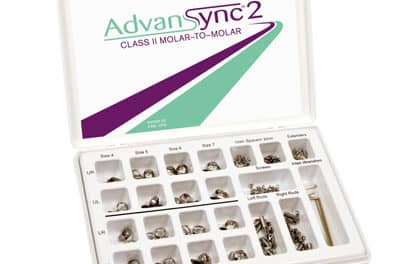With Elizabeth M. Barrett

OP: What should an orthodontist do to ease the fears of his or her staff when a transition is approaching?
Barrett: The most important thing an orthodontist can do to ease the fear of change of any kind is to have a written “vision” statement. Most orthodontists, as business owners, have a vision (statement of purpose) for their practices, but few of them have this important concept written down. That said, it is quite probable that when a transition is being considered, the vision for the future of the practice may be changing. So if there is no written vision statement before the transition process begins, you should at least have one written for the transition. Present it to your staff and perhaps involve them in helping you write up the mission statement for the practice and action steps that correlate with the vision.
Additionally, it is, I think, helpful to have a time line for the transition process. This will give the orthodontist an overview of the “who,” “what,” and “when” in the process, and it will make it easier for him or her to then decide when to start engaging the staff members in the process.
The orthodontists should also be very aware that their staff feels the pressure of being the liaison between the orthodontists and their patients in a changing practice environment.
As the process progresses, it’s a good idea to start scheduling regular meetings with an administrative and a clinical representative (or the whole staff, depending on the size of your team). Review questions that patients might be posing and any issues that need to be resolved.
When an orthodontist is retiring or bringing in a partner to expand a practice, the orthodontist is very aware of how this impacts him/her, but may not be aware of the “ripple effect” on the team. Time does need to be scheduled to answer questions, share ideas, and defuse gossip. You don’t have to share every detail of the transition—financial details, for example—but if you share your vision for the future of the practice, then the team will be more confident that there’s going to be a future, and they will want to be part of it!
OP: How long do you think a transition should take?
Barrett: Personally, I think that transition is a process of discovery that will take as long as it takes. Generally speaking, however, here are my thoughts on three types of transition that might be considered:
- A 50% buy-in with both orthodontists staying in the practice for an extended period of time may require the search for a partner to start sooner, and the transition to partnership may take longer as the orthodontists and staff seek that equilibrium that was discussed above. This could take 5 to 10 years or longer.
- A sale to full ownership may take less time and may occur more often in a fully developed practice than in a midterm practice. The “weight” of the transition, in this scenario, falls more to the new orthodontist/owner to engage the staff in the forward momentum of the practice and the vision being developed by the incoming orthodontist. In this case, staff must be open-minded and prepare to make effective changes quickly.
- A transition that involves a set date for transfer of ownership will be a mix of the two previously mentioned scenarios. Because the process, in any case, involves a significant amount of paperwork, valuations, meetings, and documentation, a time line is extraordinarily helpful to keep things on track. At the same time, the orthodontists should work together to build an effective, relational environment in which patients and staff can thrive going forward. Because orthodontic treatment times often have a time frame of 2 to 3 years, it is reasonable to consider having the transition take approximately 2 years to complete in this scenario.
-
- This is the second part of a two-part interview. You can read the first part by following the link in the “Related Articles” box below.
A final word or two: Remember that a practice in transition is a dynamic environment. In addition to forming the partnership relationship, providing your patients with the care they have come to expect, and leading your staff, there will be meetings withconsultants—legal advisers, accountants, and your management staff—and there will be documents, and more documents, to review. How you present yourself will trickle down to your staff and patients. Be diligent in your review process, be patient with your staff, be positive and affirming, don’t rush the process—unless you have to—and stay centered and, of course, vision-driven.
Elizabeth M. Barrett is the practice administrator for David R. Musich, DDS, and Matthew J. Busch, DDS, Ltd. She spoke on the topic of transitions at the 2007 AAO Annual Session. She can be reached at /i>











